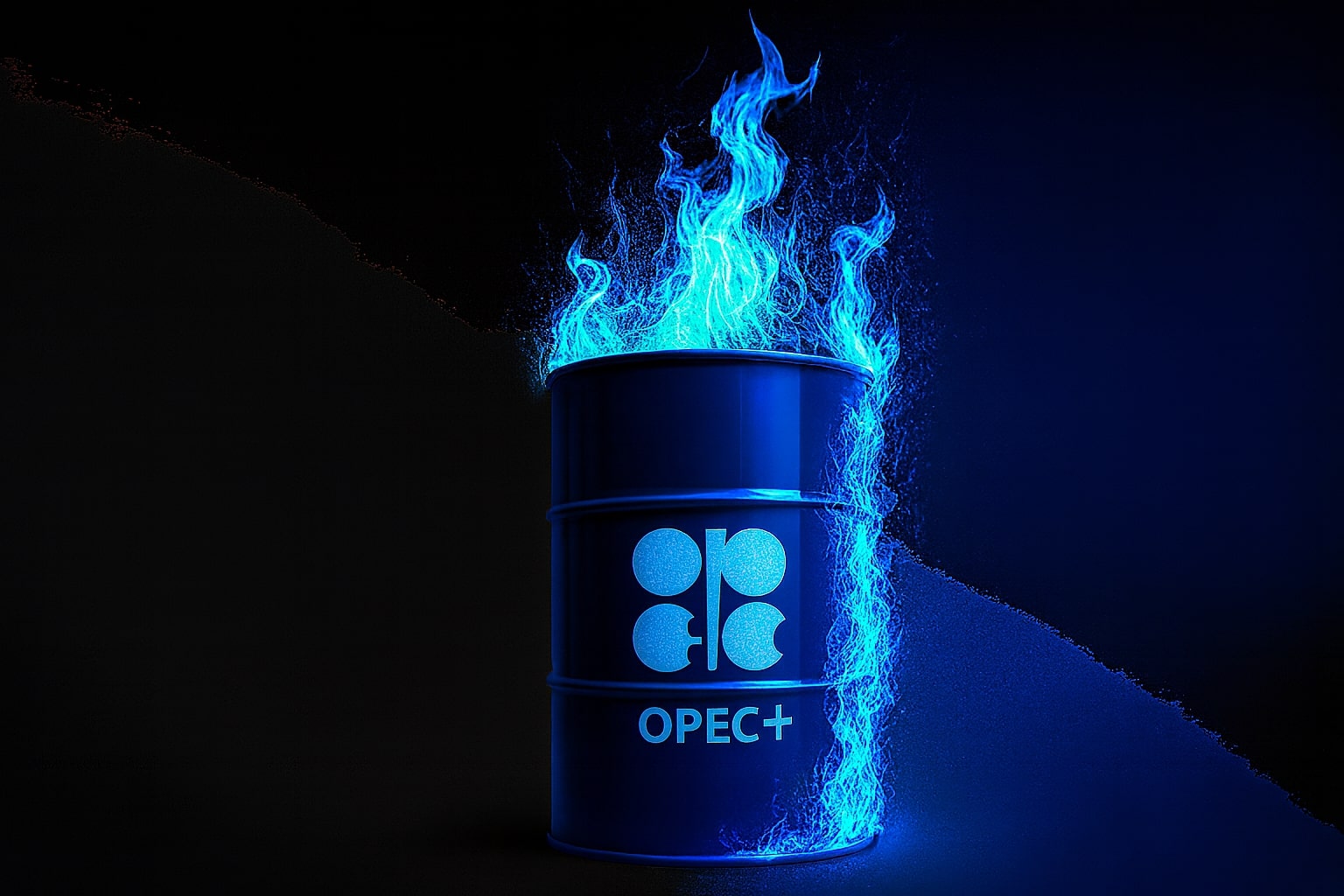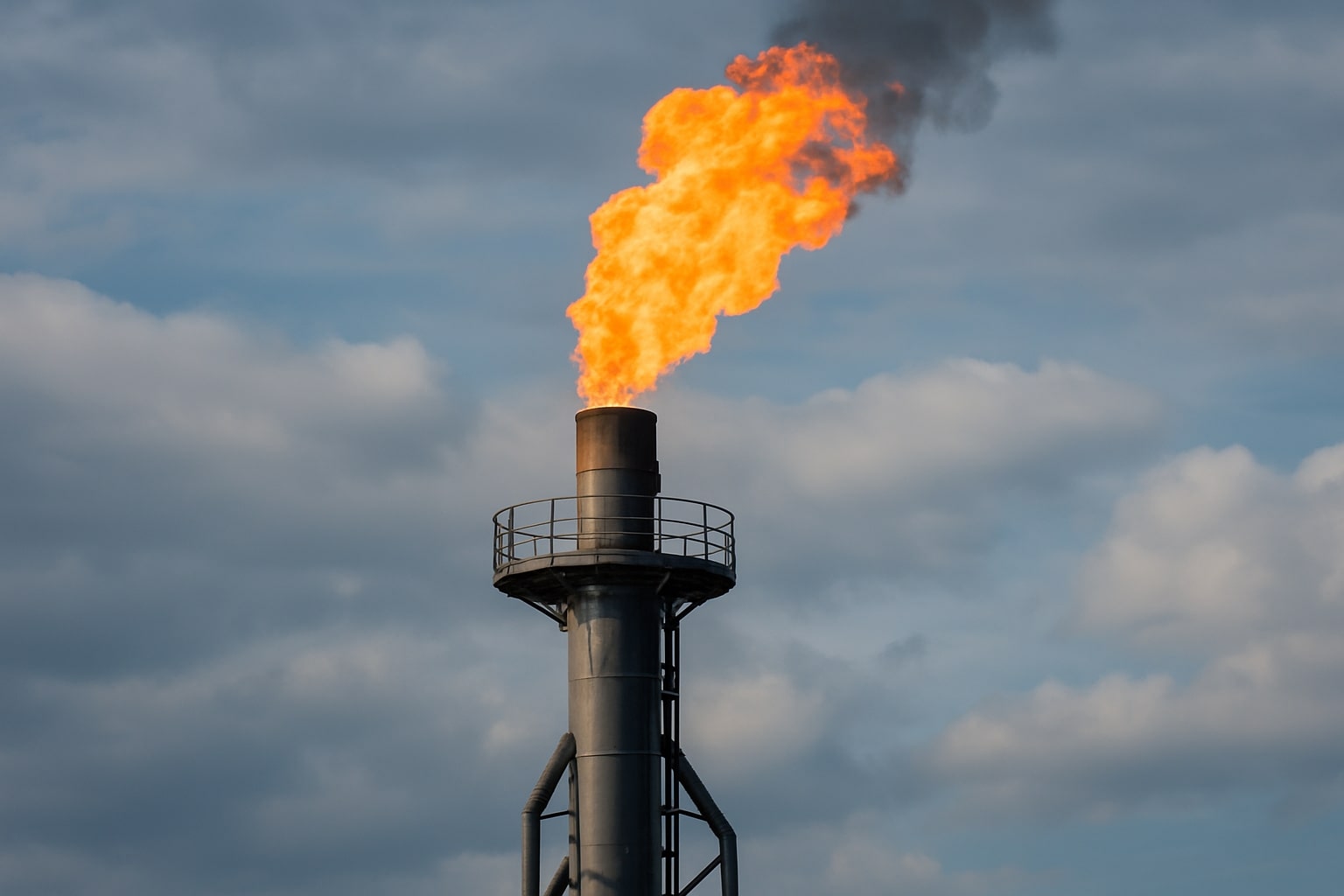
Oil Prices Steady at $57–$61 as U.S.-China Tariffs, OPEC+ Supply Glut, and Chinese Hoarding Redefine Market Outlook
WTI (CL=F) trades near $57.52 and Brent (BZ=F) at $61.13 after a 50% slide from 2022 highs, with OPEC+ supply growth, Trump’s trade war, and record Chinese stockpiling shaping a fragile price floor | That's TradingNEWS
Oil Market Braces for Volatility as WTI (CL=F) Holds $57 and Brent (BZ=F) Struggles at $61 Amid Tariff Tensions and OPEC+ Output Shifts
WTI and Brent Caught Between Supply Surplus and Political Shockwaves
Oil markets have entered a fragile equilibrium, with WTI (CL=F) trading near $57.50 per barrel and Brent (BZ=F) holding around $61.10, levels not seen since early summer. The recent correction of over 50% from 2022 peaks of $128 (Brent) and $124 (WTI) underscores a fundamental rebalancing driven by oversupply fears, a weakening macro environment, and renewed geopolitical turbulence. The latest blow came from escalating U.S.-China trade tensions after President Donald Trump reinstated 100% import tariffs on Chinese goods, triggering risk aversion across commodities. Simultaneously, the Trump-Putin summit talks in Budapest and new U.K. sanctions on Russian energy exports have intensified global uncertainty, dampening investor sentiment in oil futures.
A New Price Floor Emerges as BofA Sees $55 Support
According to fresh market modeling, a potential floor appears to be forming near $55 per barrel, as downside momentum slows amid mixed macro signals. BofA Global Research maintains its Brent forecast at $61 for Q4 2025 and $64 for early 2026, noting that the market’s structural weakness has already been priced in. The bank’s analysis highlights that the current $4 contango between long-term futures and near-term backwardation is an anomaly seen in only 5% of the past 20 years, reflecting market confusion amid conflicting supply and demand narratives. Inventories across OECD countries remain historically low, yet a steady build-up of oil in Chinese strategic reserves continues to absorb excess barrels, masking underlying surplus volumes. These trends, combined with rising shipping rates and increased oil-on-water volumes, suggest that inventories could swell in Q1 2026, pressuring prices further before stabilizing later in the year.
OPEC+ Production Ramp-Up and China’s Strategic Hoarding Complicate Balance
Oil’s supply dynamics have been skewed by the OPEC+ decision to increase quotas by four million barrels per day over 18 months beginning April 2025. This expansion, coupled with muted demand recovery, has reinforced surplus conditions across global markets. Yet, China’s strategic accumulation has kept commercial inventories from ballooning. Roughly 70% of new supply growth from OPEC+ nations has been redirected toward Chinese state reserves, where record stockpiling has coincided with Beijing’s reimposed export limits on rare earth elements (REEs) — an action that rattled commodity traders and fueled price swings in both oil and metals. Analysts expect the imbalance to persist into mid-2026 unless OPEC+ curbs production or demand accelerates through fiscal stimulus and trade normalization.
Macquarie, SEB, and EIA Diverge on Price Outlooks
Forecasts remain widely divided. Macquarie strategists project a bearish near-term setup, citing “very heavy” balances in Q4 2025 and Q1 2026, even as prices remain range-bound in backwardation. SEB’s Bjarne Schieldrop foresees Brent sliding “into the $50s” before OPEC+ intervenes to trim production and prevent a price collapse. In contrast, Standard Chartered expects Brent to average $61 in 2025 and rebound to $78 in 2026, while BMI (Fitch Group) anticipates a steadier $68 average for 2025 and $67 in 2026. The U.S. Energy Information Administration (EIA) offers the most conservative view, estimating $68.64 in 2025 and a sharp pullback to $52.16 in 2026 due to potential oversupply and slowing consumption growth. This wide dispersion in outlooks underscores the uncertainty surrounding post-pandemic oil demand and the policy unpredictability driving trade and energy decisions worldwide.
WTI (CL=F) Technical Levels Show Fragile Support Near $55
From a technical standpoint, WTI crude remains precariously balanced above its multi-month low near $55 per barrel. A break below this threshold could open the path toward $52, matching EIA’s projection for next year. Short-term rebounds to $60–$61 are plausible amid technical short covering, yet rallies are likely to face resistance from algorithmic traders who continue to fade every bounce. RSI readings below 40 suggest bearish momentum, though positioning data from CFTC indicates that speculative shorts may already be overstretched. The recent uptick in oil shipping costs, historically a leading indicator of rising on-water volumes, hints at potential short-term inventory builds that may cap upside. Analysts at FXEmpire and Oilprice.com both point to structural weakness but emphasize that a rebalancing could unfold once OPEC+ and U.S. shale output normalize in tandem.
Brent (BZ=F) Faces Structural Contango and Geopolitical Headwinds
Brent crude, currently hovering near $61 per barrel, faces a unique double pressure from macro deterioration and structural contango. The premium for deferred contracts has widened, reflecting fears that production growth from non-OPEC countries, especially the U.S. and Brazil, may exceed consumption in 2026. At the same time, Europe’s energy landscape is being reshaped by sanctions, refinery outages, and geopolitical friction. U.K. sanctions on Russia’s Rosneft and Lukoil, as well as on India’s Russian-backed Nayara refinery, have yet to move prices meaningfully, suggesting that the market’s risk premium has evaporated. Meanwhile, Iranian tankers reappearing on global tracking systems after years of dark operations signal a deliberate defiance of sanctions and add another layer of supply uncertainty. Russia’s continued exports to China via sanctioned terminals like Beihai demonstrate the shifting balance of trade, where geopolitics no longer translate into predictable price spikes.
U.S. Output Dynamics and Fiscal Policy to Shape Mid-2026 Recovery
Oil production in the United States remains robust at 13.2 million barrels per day, near record highs, though BofA expects it to plateau through 2026 as rig activity slows amid lower margins and higher financing costs. Fiscal stimulus and potential trade negotiations could revive demand later in 2026, especially if the U.S. dollar weakens and OPEC+ implements moderate supply cuts. BofA projects that such a combination would keep Brent above $55, even with surplus volumes. Additionally, the potential return of U.S. refiner Citgo Petroleum to private equity hands, coupled with efficiency initiatives, may improve downstream margins and temper inventory builds. Still, global demand growth is expected to remain muted, rising by only 0.8–1.0 million barrels per day through 2026 — insufficient to absorb all new capacity additions.
Read More
-
AMD Stock Price Forecast - AMD At $210, $9.25B Q3 And 6GW OpenAI Catalyst
14.12.2025 · TradingNEWS ArchiveStocks
-
Ethereum Price Forecast - $3,100: Fed Power Shift & Weak On-Chain Activity Put 2026 Rally At Risk
14.12.2025 · TradingNEWS ArchiveCrypto
-
Oil Price Forecast: WTI (CL=F) Pinned Near $57 As Brent (BZ=F) Struggles Around $61
14.12.2025 · TradingNEWS ArchiveCommodities
-
US Stock Market Forecast: S&P 500 at 6,827, Dow 48,458 as Fed Cut and Jobs–CPI Data Collide
14.12.2025 · TradingNEWS ArchiveMarkets
-
EUR/USD Price Forecast - Eur Holds Around 1.17 As Fed Cut And Euro Tests Multi-Month Resistance
14.12.2025 · TradingNEWS ArchiveForex
Market Psychology, Hedge Activity, and the Path Forward
Investor sentiment has turned defensive as macro and geopolitical signals blur the outlook. Hedge funds have cut net long positions in both WTI and Brent to the lowest levels since 2020, reflecting skepticism about a near-term rebound. Yet physical traders note that end-user demand for refined products, particularly jet fuel and diesel, remains stable, cushioning prices from further collapse. Refining margins, especially in Asia, have improved slightly due to Chinese product export controls, which may lend short-term support to crude benchmarks. Analysts agree that while oil’s immediate trajectory is dominated by surplus narratives, underlying fundamentals — from rising transport fuel demand to delayed renewable project rollouts — may help stabilize prices in the $55–$65 range over the next 6 months.
Final Assessment: Oil’s Correction Near Maturity, but Rally Unlikely Before 2026
The combined evidence from WTI (CL=F) and Brent (BZ=F) markets points to a late-stage correction nearing exhaustion rather than a full-blown crash. Supply surpluses, Chinese stockpiling, and OPEC+ production inertia continue to weigh on sentiment, yet price action around $55–$57 suggests a soft floor forming. The market appears to be pricing in a scenario of weak global growth, not systemic demand destruction. While a modest rebound toward $63–$65 is possible in the next two quarters, upside potential will remain capped unless geopolitical risk premiums return or OPEC+ intervenes decisively. Based on current fundamentals, the outlook for oil leans cautiously bullish, with a Buy bias emerging below $56 and medium-term targets between $63–$68 through 2026, contingent on demand stabilization and trade normalization.


















